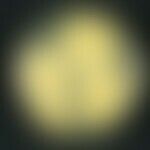HistoryThis section has been translated automatically.
Durie and Frey, 1957
General definitionThis section has been translated automatically.
Geophilic dermatophyte and saprophyte. Pathogenicity is controversial. For humans almost apathogenic! Mostly found as contamination in dermatological test materials of the interdigital spaces and soles of the feet. In this respect interesting from a differential diagnostic point of view.
You might also be interested in
Occurrence/EpidemiologyThis section has been translated automatically.
Spread throughout the world.
ClinicThis section has been translated automatically.
S.u. Tinea pedum.
MicroscopyThis section has been translated automatically.
- Strong, septated hyphae. Spiral hyphae (therefore easily confused with T. mentagrophytes!).
- Microconidia: Very common and numerous, unicellular, elongated form with a broad base.
- Macroconidia: Multicellular, smooth and thin-walled, elongated or cylindrical form, tapering at the ends.
- Rarely chlamydospores.
LiteratureThis section has been translated automatically.
- Ali-Shtayeh MS et al (2002) Ecology of dermatophytes and other keratinophilic fungi in swimming pools and polluted and unpolluted streams. Mycopathologia 156: 193-205
- Lehenkari E et al (1995) Dermatophytes in northern Finland in 1982-90 Mycoses 38: 411-414
- Lupa S et al (1999) Epidemiology of dermatomycoses of humans in central Poland. Part III Tinea pedis. Mycoses 42: 563-565
Incoming links (1)
Trichophyton;Disclaimer
Please ask your physician for a reliable diagnosis. This website is only meant as a reference.







